Here's How Graceland Was Completely Recreated for "Elvis"
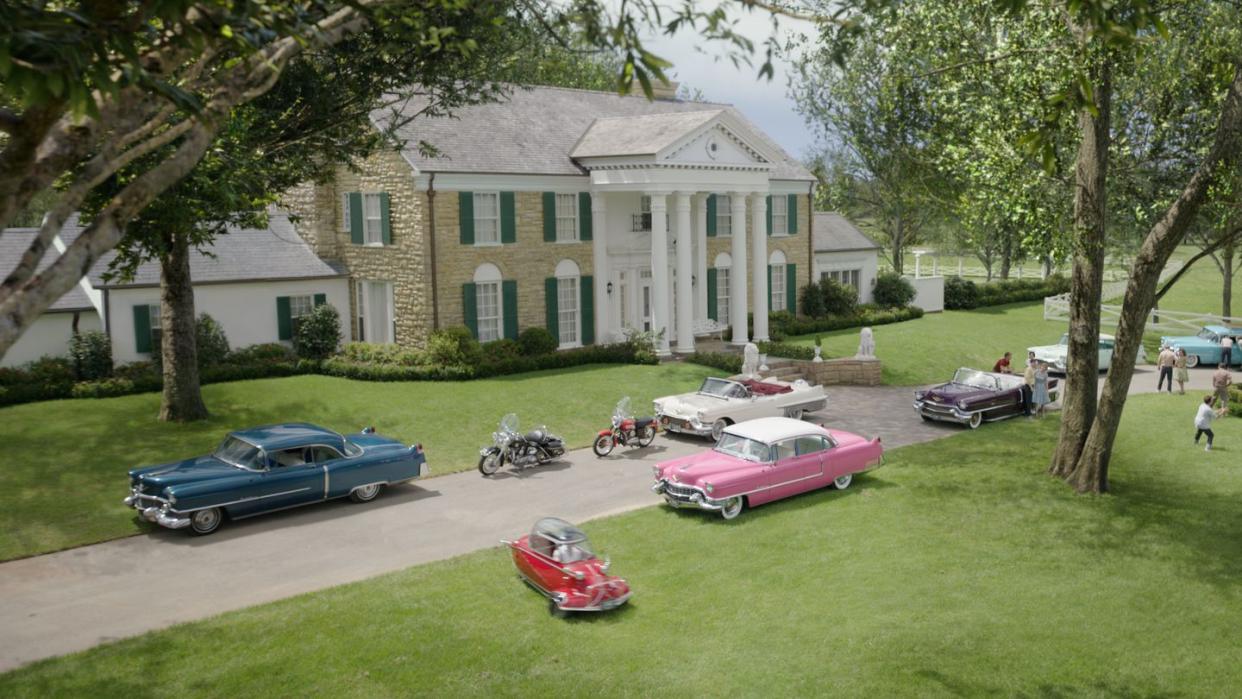
- Oops!Something went wrong.Please try again later.
Significant cultural icons are often associated with places—the cities where they grew up, the homes they live in, and the venues they frequent. When you think of Elvis Presley, you not only think of the King of Rock ‘n’ Roll’s raw musical talent but of his Graceland estate, Las Vegas’s former International Hotel, and Memphis’s Club Handy (hardcore fans may have even heard of his potentially haunted old apartment). So for Baz Luhrmann's new biopic Elvis—in theaters now—it was crucial for Catherine Martin and her production team to bring the spaces that shaped the musician (and vice versa) to life.
Shooting the film completely in Queensland, Australia, called for meticulous recreations, especially when building Graceland. The production team did a huge analysis by visiting the real Memphis estate multiple times, accessing original plans through the Graceland archives, and pouring over photographs for hours on end. “Baz wanted Elvis's kind of meteoric rise to fame and his rags to riches story to be echoed in the evolution of both the interior and the exterior,” explains Martin, co-production designer as well as costume designer and producer on the film.

The recreation was built on what was once a horse paddock, near a flower farm, an area that had the right topography to match the real location, which is set on an incline. When the estate first appears in the film, it’s shown as a working cattle farm similar to when Elvis originally moved in during the ‘50s. The interior features blue walls and red carpeting. “We were lucky enough to be taken around [Graceland] by the head archivist, Angie, and she took us into the hall closet,” Martin says. “There's actually a bit of that blue paint extant in the closet, so we were able to take paint chips and match the color.”

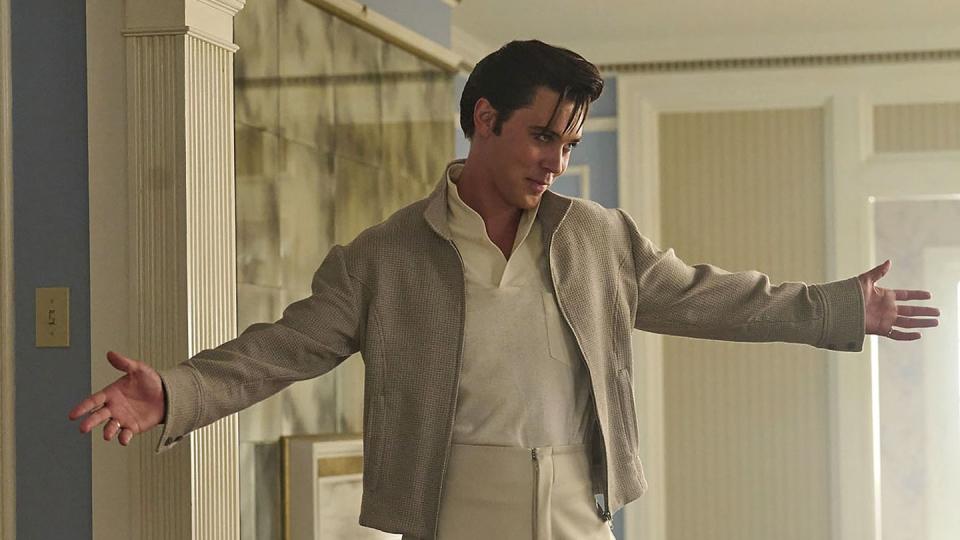
Another major element? The landscaping. Devoid of much at first, the land eventually includes planted gardens, stone lions, and a curb as Elvis becomes richer. The interior also jumps to how we see Graceland today—with a more neutral palette, pops of color, metallic accents, and stained glass with peacock motifs. “It was really important to have a touchstone for the audience where they felt familiar with the interior,” Martin explains.

Many of the furnishings were custom made in Australia, like an enormously long sofa. (Martin wonders how a sofa that big ever fit through the door of the actual house!) Other pieces were sourced or altered to replicate the look. There are some slight differences, though, including a vintage wallpaper in Elvis’s mother’s closet. It appears during a scene when Elvis (played by Austin Butler) mourns his mother’s death. It was a last-minute decision not only to do the scene in that closet but to cover the true-to-reality white walls with a wallpaper they had on hand. It was swiftly put up in 20 minutes to make the scene feel more claustrophobic and enveloping, so you can powerfully feel Elvis’s connection to his mother (played by Helen Thomson).
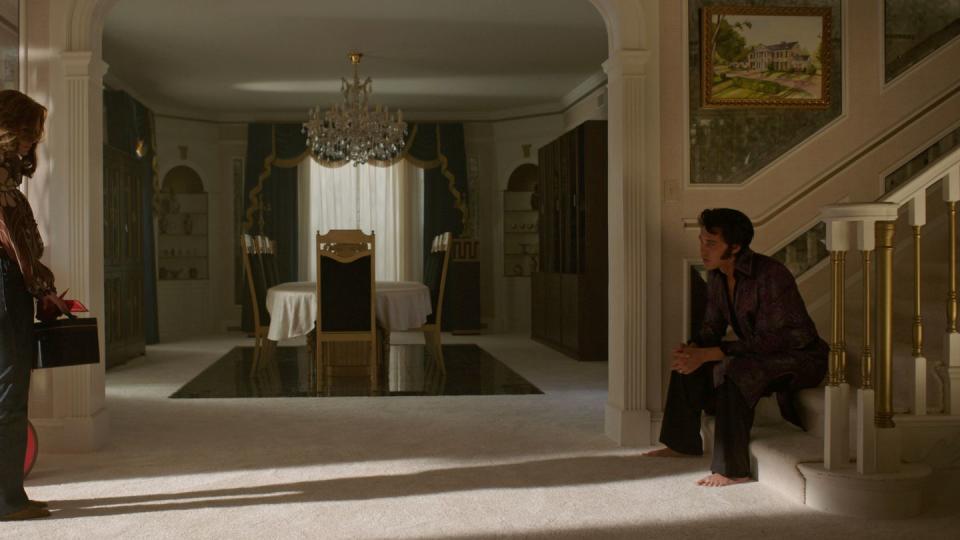
Throughout the film, we see plenty of other defining locations. Shake Rag—the historically Black community in Tupelo, Mississippi where Elvis grew up—was shot on a barren, dried-out shrimp farm that was shut down by the Australian government due to a viral infection. Elvis’s International Hotel suite set, a favorite of Martin’s, was designed to look like a golden cage and sarcophagus with a very specific view of Las Vegas. It's drenched in deep jewel-toned colors, velvet upholstery, metallic details, and patterned drapery. “There was just something quintessentially Elvis about it, even though it was a fictionalized interior,” Martin says.
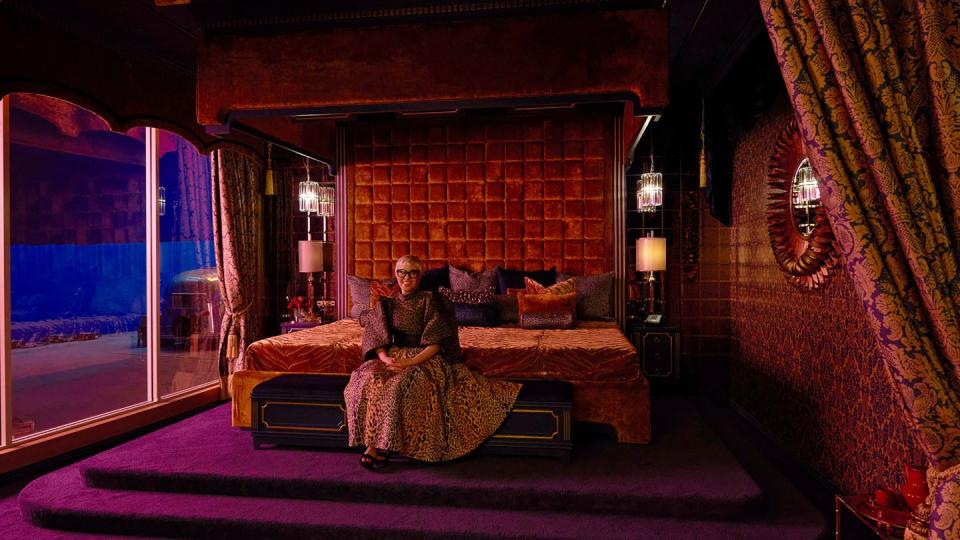
The longest-standing set was Club Handy on Beale Street, which stood for a year because it was meant to be shot early on, and then COVID-19 shut down the production. “We had a little birthday party when it turned one,” Martin shares.
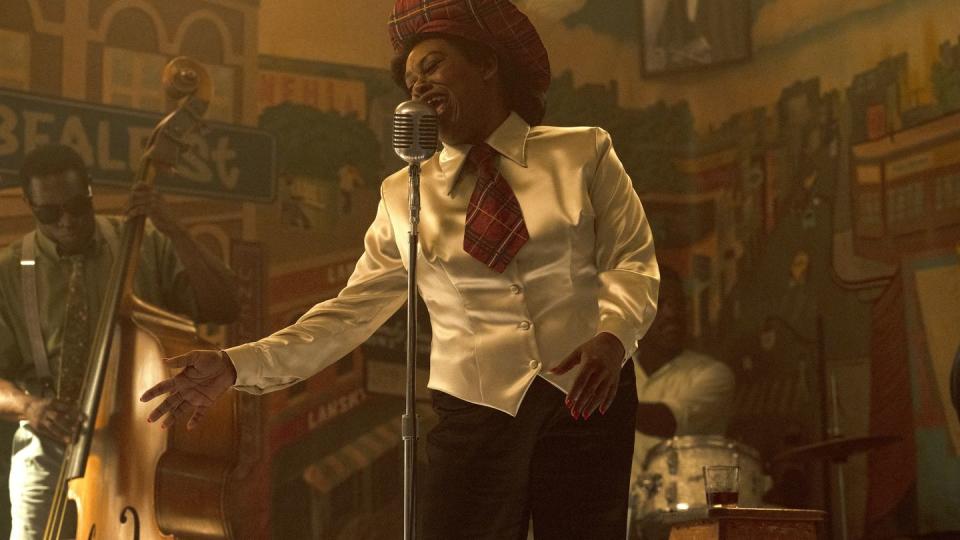
Whether you're a longtime Elvis fan or are eager to see if Australia can pass for America, the incredible film is certainly worth a watch. I, for one, already want to see it again!
Love looking at incredible set designs? Us, too. Let’s obsess over them together.
Follow House Beautiful on Instagram.
You Might Also Like

